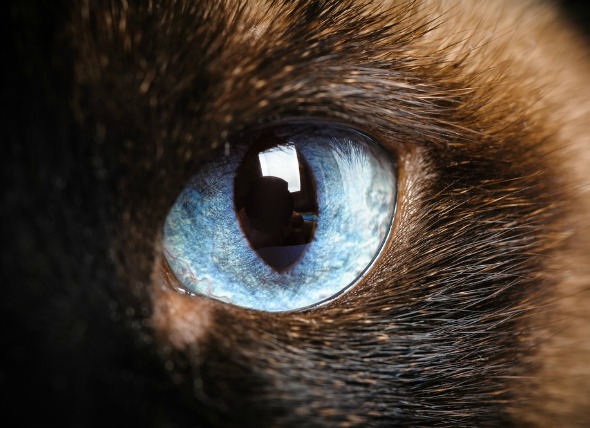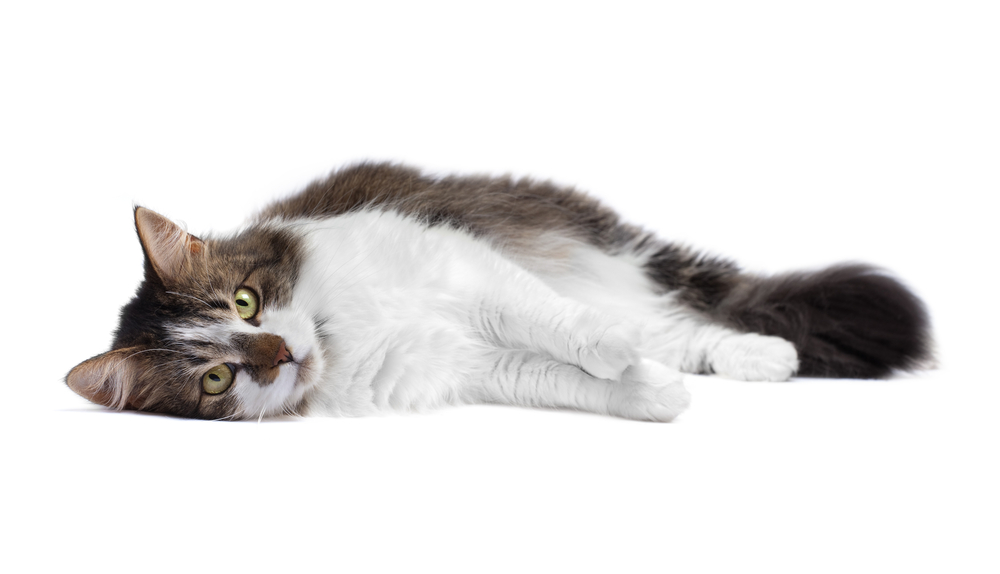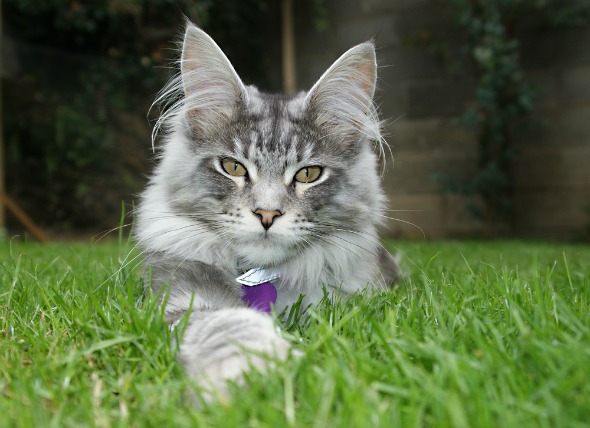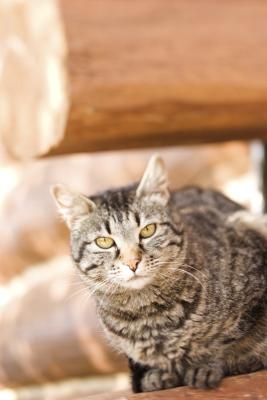

The throat is the end of the two major air passages that begin at the nostrils. Very fine scrolls of bone called turbinates fill the nasal passages. They have a covering of pink tissue (mucosa), much like the lining of the mouth. As the air passes through the turbinates in the nose, it is warmed and filtered on its way to the lungs. The nasal cavity is separated from the mouth by what we call the “roof” of the mouth, or the hard palate.
The source of a nasal discharge is typically in the upper respiratory organs, such as the nasal cavities, sinuses, and postnasal area. However, if the cat has a swallowing disorder or a digestive tract disease, secretions may be forced into the postnasal area. If the secretions are coming from the eyes, it may be caused by nerve damage to the middle ear.
This nasal discharge may be watery, thick, and mucus-like, or it may have pus or blood in it. (Blood-tinged discharge is a good indicator that there is a blood disorder.) Nasal discharge usually occurs when infectious, chemical, or inflammatory invaders irritate the nasal passages. It may also be from a foreign object that has become lodged in the nose. If your cat has a middle ear disease, it may decrease the normal secretions and cause the body to secrete an abnormal amount of mucus.
Remember that it is normal for cats to sneeze and have a nasal discharge, just as it is for humans. It is only when it becomes severe or chronic that you need to become concerned.
The condition will not require hospitalization unless surgery is recommended, or if an exploratory scope of the nasal cavity or the sinuses is required.
Treatment will depend on the cause of the discharge. Bacterial infections may need to be treated with antibiotics. If it is determined that the cause is fungal, your veterinarian will prescribe anti-fungal medication. Decongestants may also be advised. Antiviral medications are sometimes used for chronic upper respiratory infections of a viral nature.
Dental work, possibly including extraction of diseased teeth, may be necessary if the cause is related to one or more bad teeth. Tumors and/or polyps may need to be removed surgically, if possible. Foreign bodies, of found, should be removed from the nasal cavity as well.
Keep your cat warm and make sure it is getting enough to eat and drink. In addition, help your cat keep its nasal passages clean, especially if there is a discharge or chronic sneezing. A soft, damp rag can be used to gently clean your cat’s nose. Finally, keep your cat’s living area clean so that dust and foreign particles do not further irritate the nasal and throat passages.
 Ingestion of Feces and Foreign Objects in Cats
Coprophagia and Pica in Cats
Pica is a med
Ingestion of Feces and Foreign Objects in Cats
Coprophagia and Pica in Cats
Pica is a med
 Tumor of the Eye in Cats
Uveal Melanoma in Cats
The uvea is the part of th
Tumor of the Eye in Cats
Uveal Melanoma in Cats
The uvea is the part of th
 Estrus Symptoms after Spaying in Cats
Ovarian Remnant Syndrome in Cats
An ovariohystere
Estrus Symptoms after Spaying in Cats
Ovarian Remnant Syndrome in Cats
An ovariohystere
 Heart Disease (Hypertrophic Cardiomyopathy) in Cats
Cardiomyopathy, Hypertrophic in Cats
The heart ha
Heart Disease (Hypertrophic Cardiomyopathy) in Cats
Cardiomyopathy, Hypertrophic in Cats
The heart ha
 Different Breeds of Tabby Cats
Different Breeds of Tabby Cats
Differe
Different Breeds of Tabby Cats
Different Breeds of Tabby Cats
Differe
Copyright © 2005-2016 Pet Information All Rights Reserved
Contact us: www162date@outlook.com